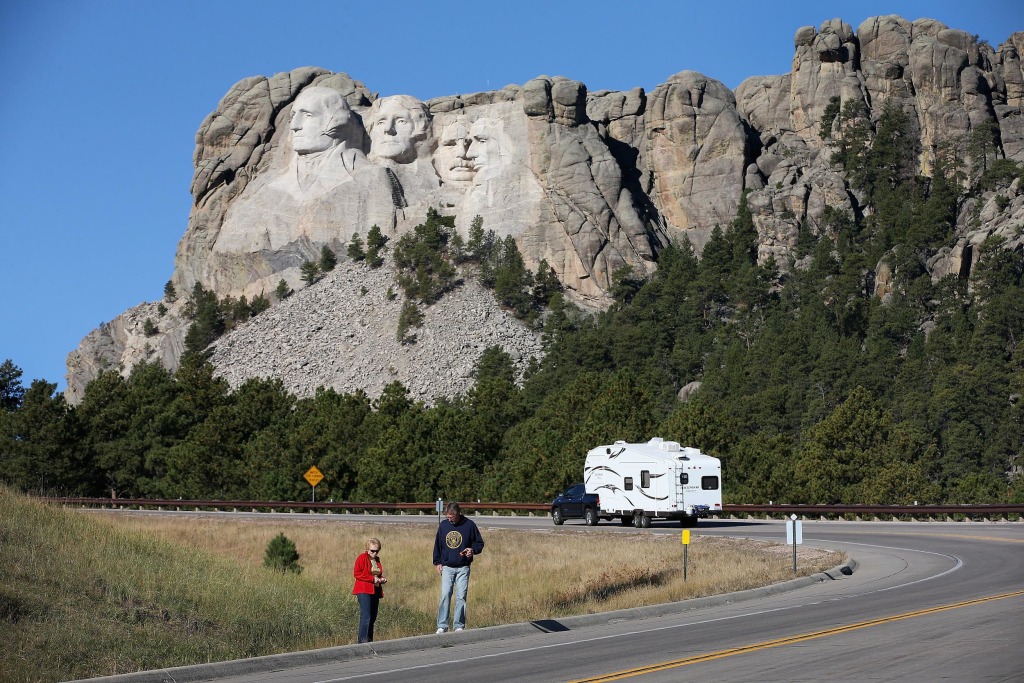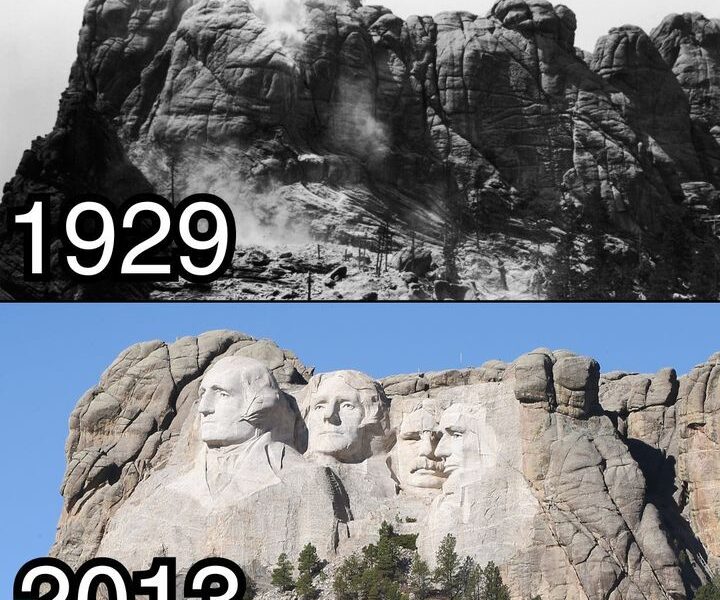Mount Rushmore – 1929 vs 2013
Mount Rushmore, one of America’s most iconic landmarks, has a rich history that spans nearly a century. The monument, featuring the faces of four U.S. presidents—George Washington, Thomas Jefferson, Theodore Roosevelt, and Abraham Lincoln—symbolizes the nation’s ideals of democracy and leadership. The contrast between its early stages in 1929 and its fully realized form in 2013 tells the story of American ambition and perseverance.

The Beginnings: 1929
In 1929, Mount Rushmore was still in its conceptual stage. The project, envisioned by historian Doane Robinson, aimed to promote tourism in South Dakota. Sculptor Gutzon Borglum was selected to bring the vision to life, with plans to carve the likenesses of prominent U.S. presidents into the granite face of the Black Hills. Initial preparations included surveying the site, gathering funding, and assembling a team of workers. However, the actual carving did not begin until 1927 and continued well into the 1930s, facing numerous financial and logistical challenges.

The Completed Monument: 2013
By 2013, Mount Rushmore had long been completed and had become a symbol of national pride. The monument, finished in 1941 after Borglum’s death, attracts millions of visitors annually. Over the decades, it has undergone preservation efforts to maintain its grandeur against the forces of nature. Modern technology has aided in monitoring cracks and weathering, ensuring that the faces of these American leaders remain intact for future generations.

A Timeless Symbol
The transformation of Mount Rushmore from an ambitious idea in 1929 to a completed masterpiece in 2013 highlights the determination behind its creation. The monument continues to serve as a testament to American resilience and craftsmanship, standing tall as a reminder of the country’s enduring legacy.


